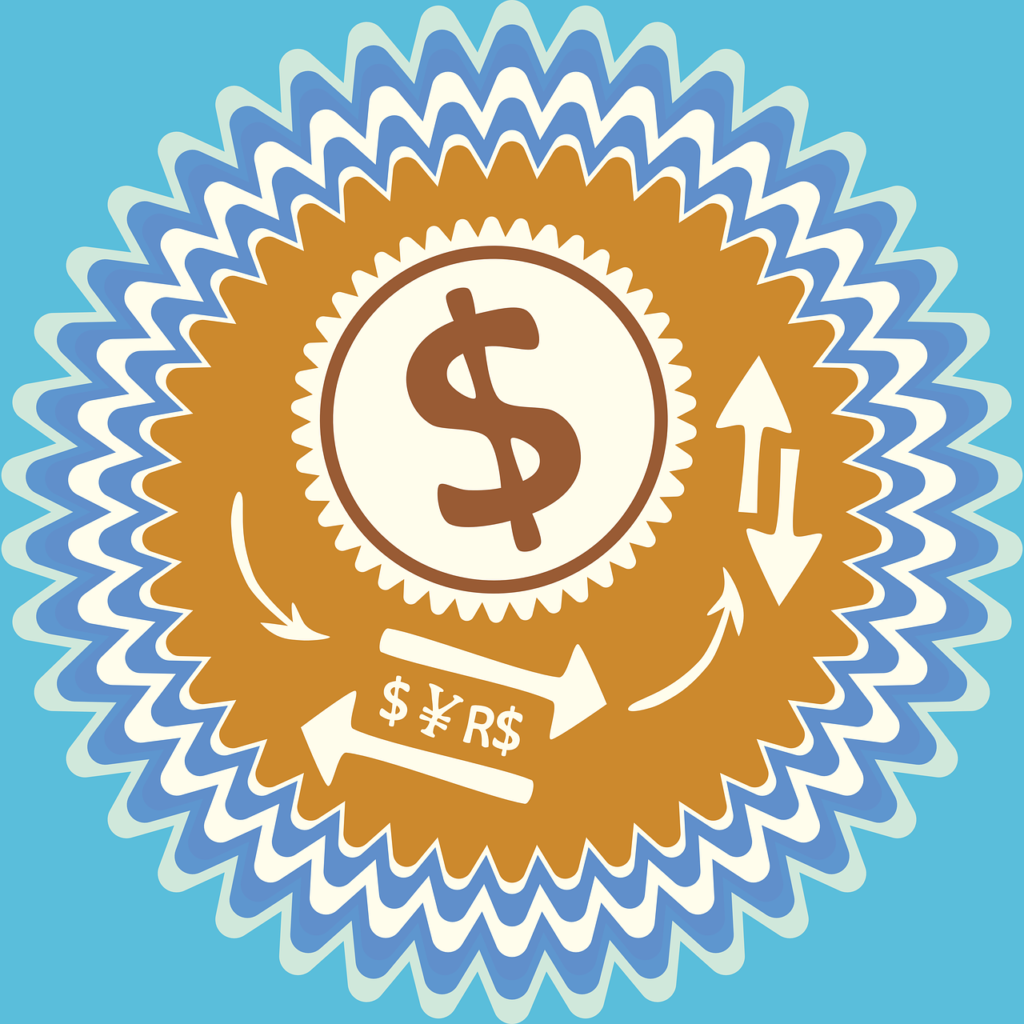Running a sole proprietorship in BC may seem overwhelming, but managing your cash flow doesn’t have to be. With these helpful tips, you can ensure that your business stays financially stable and successful. From monitoring your expenses to creating a cash flow forecast, these strategies will empower you to make informed decisions and navigate the challenges of cash flow management in your BC sole proprietorship. So, if you’re ready to take control of your finances and set your business up for long-term growth, read on for valuable insights and practical advice.
Understanding Cash Flow
Importance of cash flow management
Managing cash flow is essential for the success and sustainability of any business, including your sole proprietorship in BC. Cash flow management allows you to have a clear picture of the funds flowing in and out of your business, ensuring that you have enough cash on hand to cover your day-to-day expenses and meet any financial obligations. Without effective cash flow management, your business may face cash shortages, making it challenging to pay suppliers, employees, and other expenses, ultimately putting your business at risk.
Definition of cash flow
Cash flow refers to the movement of money in and out of your business during a specific period. It represents the net amount of cash generated or expended by your business operations, investments, and financing activities. Positive cash flow occurs when your business receives more money than it spends, while negative cash flow occurs when your business spends more money than it receives.
Difference between cash flow and profit
While profit and cash flow are related, they are not the same. Profit represents the difference between your revenue and expenses, indicating the financial gains your business has made over a specific period. On the other hand, cash flow focuses on the actual cash coming in and going out of your business. You can have a profitable business with negative cash flow if you have outstanding invoices or large upfront expenses. It’s crucial to understand this difference and prioritize cash flow management to prevent potential financial challenges.
Types of cash flow (operating, investing, financing)
There are three main types of cash flow that your sole proprietorship will encounter:
-
Operating Cash Flow: This refers to the cash generated or used in your day-to-day business activities, such as sales, collections from customers, and payments to suppliers and employees.
-
Investing Cash Flow: This involves the cash flow from your business’s investment activities, such as purchasing or selling assets, investments in securities, or loans made to other entities.
-
Financing Cash Flow: This represents the cash flow from your business’s financing activities, including raising funds through loans, issuing stocks or bonds, or making repayments on debts.
Understanding these different types of cash flow helps you track and manage your cash flow effectively, ensuring a healthy financial position for your sole proprietorship.
Preparing Cash Flow Forecasts
Benefits of cash flow forecasts
Cash flow forecasts provide valuable insights into your future cash inflows and outflows, allowing you to plan and make informed decisions. By preparing cash flow forecasts for your sole proprietorship in BC, you can:
- Anticipate potential cash shortages and take proactive measures to address them.
- Identify opportunities to invest surplus cash or pay off debts early.
- Plan for seasonal fluctuations or periods of low activity.
- Demonstrate your financial stability and manage expectations with suppliers, lenders, and stakeholders.
Estimating income and expenses
To prepare an accurate cash flow forecast, it’s important to estimate your expected income and expenses. Start by forecasting your expected revenue from sales, considering factors such as market trends, customer behavior, and potential changes in pricing or product/service offerings. Then, estimate your recurring expenses, including rent, utilities, payroll, insurance, and any other operational costs specific to your sole proprietorship.
Considering timing of cash inflows and outflows
Timing is critical in cash flow forecasting. Consider when you will receive payments from customers and when you need to make payments to suppliers, employees, or lenders. Take into account any expected delays or variations in payment terms. By aligning your cash inflows and outflows with their respective dates, you can accurately project your cash position at any given time.
Using historical data to project future cash flow
Analyzing your past cash flow data allows you to make more accurate projections for the future. Review your historical cash flow statements and identify trends or patterns that can help guide your forecasting. For example, if you notice cash shortages during certain months or seasonal peaks in revenue, factor these trends into your cash flow forecasts. However, keep in mind that your projections should also consider any changes or improvements you plan to implement in your business operations.

Managing Accounts Receivable
Effective management of accounts receivable is crucial for maintaining a healthy cash flow for your sole proprietorship in BC. Consider the following strategies:
Importance of timely invoicing
To ensure timely payments from your customers, it’s essential to send out invoices promptly after delivering your products or services. Clearly state the payment terms, including the due date and accepted payment methods. By providing clear and detailed invoices, you increase the likelihood of receiving payments on time, thereby enhancing your cash flow.
Offering incentives for early payments
Consider offering incentives, such as discounts or rewards, to encourage your customers to pay early. For example, you can offer a small percentage off the invoice total if the payment is made within a specified period. This can incentivize prompt payments and improve the speed at which cash flows into your business.
Establishing clear payment terms and conditions
Clearly communicate your payment terms and conditions to your customers upfront. Include details such as due dates, late payment penalties, and any consequences for overdue payments. Setting clear expectations helps avoid misunderstandings and reduces the likelihood of delayed or missed payments.
Tracking and following up on overdue payments
Monitor your accounts receivable closely and promptly follow up on any overdue payments. Send reminders or make courtesy calls to remind customers of their outstanding balances. By consistently following up on overdue payments, you increase the chances of receiving the payments and maintaining a healthy cash flow.
Controlling Accounts Payable
Negotiating favorable payment terms with suppliers
When managing accounts payable, it’s essential to negotiate favorable payment terms with your suppliers. Request extended payment terms, such as 30 or 60 days, to align your cash outflows with your cash inflows. Building strong relationships with your suppliers can also create opportunities for mutually beneficial arrangements.
Monitoring payment due dates
Stay on top of your payment due dates to avoid late payment fees or penalties. Set up reminders or use accounting software to track your accounts payable and ensure that payments are made on time. Timely payments improve your business’s reputation and may give you leverage to negotiate favorable terms in the future.
Taking advantage of early payment discounts
Some suppliers offer early payment discounts as an incentive for prompt payment. If your cash flow situation allows, take advantage of these discounts to save money on purchases. However, carefully evaluate whether the discount outweighs the potential benefit of holding onto the cash for other business needs.
Avoiding unnecessary expenses
Regularly review your expenses and identify areas where you can cut costs. Consider alternative suppliers or negotiate better prices for your materials or services. By minimizing unnecessary expenses, you can free up cash to better manage your accounts payable and improve your overall cash flow.

Improving Cash Flow through Inventory Management
Analyzing inventory turnover ratio
To improve cash flow, it’s crucial to manage your inventory efficiently. Start by analyzing your inventory turnover ratio, which measures how quickly you sell and replace your inventory. A higher turnover ratio indicates that you’re selling goods quickly, generating cash inflow. Conversely, a lower ratio may suggest excess or slow-moving inventory, tying up valuable cash.
Reducing excess inventory
Excess inventory ties up your working capital and can lead to cash flow challenges. Regularly assess your inventory levels and identify slow-moving or obsolete items. Consider offering discounts or promotions to clear out excess inventory and generate cash inflows. Streamlining your inventory management helps reduce carrying costs and improve your cash flow.
Negotiating favorable terms with suppliers
Strong relationships with suppliers can help you negotiate favorable pricing and payment terms. Consider discussing consignment arrangements, where you only pay for inventory when it’s sold, or extended payment terms to align with your cash flow cycle. Building good rapport with suppliers can lead to cost savings and improved cash flow.
Implementing just-in-time inventory system
A just-in-time (JIT) inventory system can help optimize your cash flow by minimizing inventory holding costs and reducing the risk of obsolete inventory. With JIT, you order inventory only when it’s needed, reducing the need for excessive stock. However, careful planning and coordination with suppliers are essential to ensure that you have inventory available when customers demand it.
Managing Operating Expenses
Identifying and reducing unnecessary expenses
Regularly evaluate your operating expenses to identify any unnecessary or non-essential costs. Review your budget and analyze each expense item. Consider whether there are alternative, more cost-effective solutions available. By eliminating or reducing unnecessary expenses, you can free up cash for more critical business needs.
Seeking cost-saving opportunities
Look for opportunities to save costs without compromising the quality of your products or services. For example, negotiate better rates with service providers, compare prices from different suppliers, or explore bulk purchasing options. Small cost-saving measures can add up and positively impact your cash flow.
Regularly reviewing and renegotiating fixed expenses
Fixed expenses, such as rent or insurance premiums, can often be negotiated or reduced. Regularly review these expenses and compare rates from different providers. If you’ve been a loyal customer, don’t hesitate to reach out and discuss the possibility of better terms. Renegotiating these fixed expenses can result in significant savings over time.
Implementing expense tracking and control systems
Implementing robust expense tracking and control systems is crucial for effective cash flow management. Utilize accounting software or expense tracking tools to monitor your expenses, categorize them, and track them against your budget. This allows you to identify any cost overruns or areas where you can streamline spending.

Utilizing Cash Flow Improvement Strategies
Securing a line of credit for emergencies
Having a line of credit in place provides a safety net for unexpected cash flow challenges or emergencies. Establish a relationship with a lender to secure a line of credit that can be accessed when needed. However, use this option judiciously and repay any borrowed amounts promptly to avoid excessive interest charges.
Considering short-term loans or financing options
In some instances, a short-term loan or financing option may be necessary to address temporary cash flow gaps or opportunities. Explore different financing options available to your sole proprietorship, such as equipment leasing, invoice financing, or business credit card facilities. Before pursuing any financing, carefully evaluate the terms, interest rates, and repayment schedules to ensure they align with your business’s cash flow capabilities.
Offering discounts for upfront payments
To improve your cash flow, consider offering discounts to customers who make upfront payments or deposits. This strategy incentivizes customers to pay earlier, providing you with immediate cash inflows. However, ensure that these discounts are financially feasible for your business and don’t compromise your profitability.
Implementing cash flow improvement initiatives
Take proactive steps to improve your cash flow by implementing strategies such as optimizing your invoicing process, streamlining your collection efforts, or negotiating better payment terms with your suppliers. Continuously assess your business operations for areas where cash flow can be enhanced and prioritize the implementation of improvement initiatives.
Monitoring and Analyzing Cash Flow
Regularly reviewing financial statements
Set aside time regularly to review your financial statements, including your cash flow statement, income statement, and balance sheet. This allows you to monitor your cash flow performance, identify trends, and make informed decisions to optimize your cash flow. Regular financial statement reviews help you stay proactive and responsive to any changes in your business’s financial health.
Using cash flow ratios to evaluate performance
Cash flow ratios offer valuable insights into your business’s financial performance and liquidity. Key ratios to track include the cash flow coverage ratio, operating cash flow ratio, and cash conversion cycle. Calculating and analyzing these ratios helps assess your ability to generate sufficient cash flow to meet your financial obligations and operate your business smoothly.
Identifying potential cash flow challenges
By closely monitoring your cash flow, you can identify and address potential cash flow challenges before they become critical. Look out for warning signs such as increasing accounts receivable, declining profitability, or consistent cash flow deficits. Proactive identification of these challenges allows you to take corrective actions and minimize their impact on your business’s financial health.
Seeking professional financial advice when needed
Managing cash flow effectively can be complex, especially for small business owners. If you’re unsure about any aspect of cash flow management or need expert guidance, consider seeking professional financial advice. Consultants, accountants, or business advisors experienced in cash flow management can help you navigate challenges, provide insights, and develop tailored strategies for your sole proprietorship in BC.
Maintaining a Cash Reserve
Importance of emergency funds
Building and maintaining an emergency fund is crucial to safeguard your business against unexpected financial hardships. An emergency fund provides a buffer to cover urgent expenses, such as equipment repairs, unforeseen supplier issues, or emergency marketing initiatives. By having cash reserves, you can avoid disruptions to your operations and maintain stability during challenging times.
Setting aside a portion of profits as cash reserve
Allocate a portion of your profits towards building and replenishing your cash reserve regularly. Depending on the nature of your business and its cash flow requirements, aim to set aside a percentage of your profits each month or quarter. Treat this as a non-negotiable expense and avoid overspending to ensure a steady build-up of your cash reserves.
Building a buffer for unforeseen expenses
In addition to maintaining an emergency fund, consider building a buffer for other unforeseen expenses. This buffer can be used to address unexpected opportunities or investments that may arise. Having a separate cash reserve for growth initiatives allows you to seize opportunities without jeopardizing your existing cash flow management strategies.
Replenishing the cash reserve regularly
As you use your emergency fund or additional buffer, make it a priority to replenish these funds promptly. Establish a system or schedule for replenishment to ensure that you rebuild your cash reserves within a reasonable timeframe. Consistently replenishing your cash reserves maintains financial stability and protects against future uncertainties.
Seeking Professional Assistance
Engaging a bookkeeper or accountant
Managing cash flow can be demanding, especially if you’re already wearing multiple hats in your sole proprietorship. Consider engaging a professional bookkeeper or accountant to assist with financial record-keeping, cash flow management, and financial reporting. With their expertise, they can help ensure accurate and timely financial information, allowing you to focus on other aspects of your business.
Getting help with cash flow forecasting
Cash flow forecasting can be challenging, as it requires a deep understanding of your business operations and industry dynamics. If you find it overwhelming or lack the necessary expertise, seek help with cash flow forecasting. Work with a financial consultant or advisor who can assess your business’s unique cash flow dynamics and assist in developing accurate forecasts and strategies.
Navigating tax obligations and implications
Tax obligations and implications can significantly impact your cash flow. To ensure compliance and optimize your tax management, consult with a tax professional who specializes in small businesses. They can help you navigate the complexities of tax laws, identify available deductions and credits, and develop a tax strategy that aligns with your business’s cash flow objectives.
Consulting with business advisors or mentors
Business advisors or mentors with experience in cash flow management can provide valuable guidance and insights. They can assist in analyzing your cash flow challenges, identifying areas for improvement, and guiding you in implementing effective cash flow management strategies. Seek out mentors through local business associations or industry networks to take advantage of their expertise.

